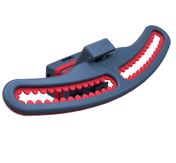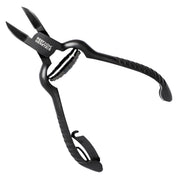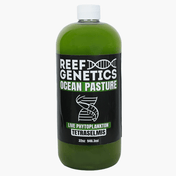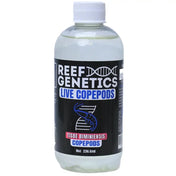Introduction to Saltwater Parrotfish
Parrotfish are large, vibrant reef grazers known for their powerful beak-like teeth and their role in maintaining healthy reef ecosystems. Found in tropical reefs worldwide, these fish continuously scrape algae off rocks and corals, making them unsuitable for reef tanks. Due to their specialized diet and need for large swimming space, parrotfish are challenging to keep in home aquariums and are best suited for expert aquarists with very large tanks.
Care Requirements
Care Level: Difficult – Requires a large, well-maintained aquarium Minimum Tank Size: 150 – 300+ gallons Smaller species (e.g., Princess Parrotfish) – 150+ gallons Larger species (e.g., Stoplight Parrotfish) – 300+ gallons Aquarium Setup: Requires mature live rock with ample algae growth, and strong water flow
Diet & Nutrition
Parrotfish are herbivores that consume algae and coral substrate, making their diet difficult to replicate in captivity. Diet: Herbivorous – Requires a constant supply of algae and plant matter
Recommended Foods:
Marine algae and spirulina Nori and seaweed sheets Enriched herbivore pellets Some species require crushed coral to aid digestion
Lifespan & Growth Rate
Lifespan: 5-10+ years Growth Rate: Fast – Many species reach 12-24 inches in a short period Parrotfish require frequent monitoring and a stable diet to support healthy growth.
Temperament & Compatibility
Temperament: Peaceful – Can be territorial over feeding areas Reef Safe? No – Will consume corals, invertebrates, and rock structures Parrotfish should be housed in large aquariums with open swimming areas and few tankmates, as they can be territorial when grazing.
Common Challenges & Considerations
Dietary Needs: Most parrotfish require constant foraging, making it difficult to meet their needs in captivity. Tank Size Requirements: Grow too large for most home aquariums. Not Suitable for Reefs: Will actively consume corals and degrade live rock over time. Popular Species Princess Parrotfish (Scarus taeniopterus) – Smaller species, brilliant blue and yellow coloration Bicolor Parrotfish (Cetoscarus bicolor) – Striking white-and-brown juvenile phase, transitions to orange and green Bullethead Parrotfish (Chlorurus sordidus) – Larger species, active algae grazer Stoplight Parrotfish (Sparisoma viride) – Named for its red, yellow, and green adult coloration
At Top Shelf Aquatics, we take pride in ensuring your order arrives safely and in perfect condition. Here’s everything you need to know about our shipping process:
Livestock Shipping Details
- Flat Rate Shipping:
- $39.99 Out of State
- $34.99 Florida (In-State)
- Orders over $299 ship FREE!
- NO FREE Shipping during Sale Events
- Shipping Days: The calendar during checkout determines when your livestock order will arrive. Normally we ship Monday - Thursday via FedEx Priority Overnight.
Orders placed by 2 PM EST Monday - Thursday ship the same day. Orders placed after 2 PM or on Fridays will ship the next business day. - Delivery Times: Most packages arrive by 10:30 AM EST, though remote areas may experience later deliveries.
We take every measure to protect your livestock, including specialized packaging to maintain temperature and safety during transit.
Dead on Arrival (DOA) Policy
In the rare event of a DOA, you must submit a DOA Request within 2 hours of delivery (FedEx posted time). Once submitted, we will issue a replacement or store credit for the livestock. Please note:
- Shipping costs are not included in the credit.
- Refunds are not offered for livestock or shipping.
While we cannot be held responsible for delays caused by mechanical or weather issues, rest assured we’ll do everything possible to make it right!
Reef Guard Protection Plan
For ultimate peace of mind, upgrade to our Reef Guard Protection Plan. With Reef Guard, you’ll enjoy:
- Extended Livestock Guarantee: Coverage for up to 5 days.
- Priority Resolutions: Hassle-free claims with fast resolutions.
- Weather & Shipping Delay Coverage: Includes FedEx lost packages and damages.
Shipping Restrictions
- We currently ship livestock only within the continental U.S.
- Note: Due to Hawaii state law, we are unable to ship corals to Hawaii.
Now’s the perfect time to prepare your aquarium for its new additions. Consider doing a water change and ensuring space is ready. Check out our YouTube channel for detailed care instructions for your new corals!
For any questions or concerns, feel free to reach out to our support team. We’re here to help make your reefing journey a success!
5 Day Reef Guard
Temp-Control Box
Priority Overnight
Expert Care Support





















